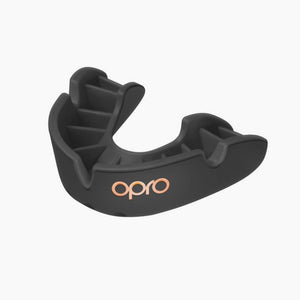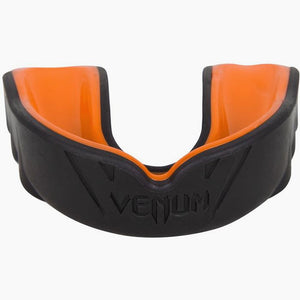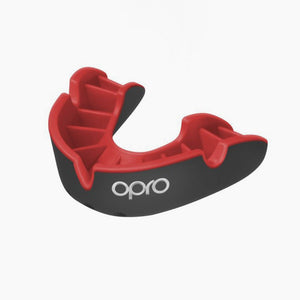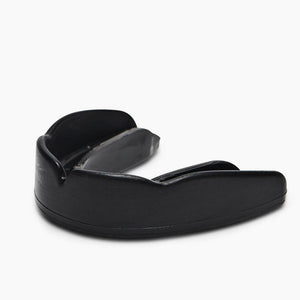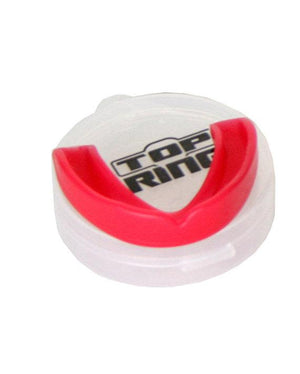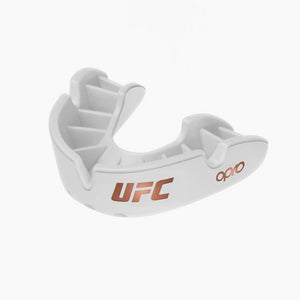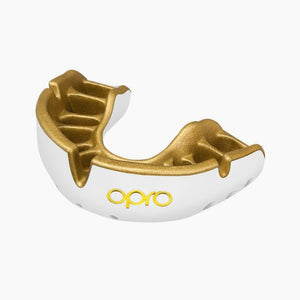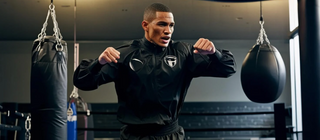How to choose the right Mouthguard
Three things you will learn in this article:
- The Mouthguard will condition your sports performance
- How to choose the Mouthguard suitable for you
- How to take care of your Mouthguard
In combat sports, the combination of aerobic and anaerobic capacities (in other words: "having breath") is crucial to the level of performance, in training as well as in competition. "Having breath" especially at the amateur and amateur level, can really make a difference in athletes at the same level from the technical point of view.
Beware, however, that good athletic training behind us is not enough, because even if we have grinded out dozens of miles of running, and performed hundreds of circuits and bag shots, the work can be undone if during our performance we do not ensure a breathing optimal to our body.
During the most intense performance, it is the mouth that is the main vehicle of oxygenation, and if an obstacle (the Mouthguard) prevents the optimal entry of air into our body we risk producing suboptimal performance. This is why the choice of the Mouthguard can make all the difference, and it requires some attention on the part of the athlete who wants to perform at his or her best in competition.
Why use the Mouthguard
Athletes who participate in sports, especially contact or combat sports (such as Boxing, Kick Boxing, MMA, but also Rugby, Basketball, Water Polo, Cycling, Motocross, Horseback Riding, etc.), should use a Mouthguard either in training and in competition. The Mouthguard in fact protects teeth, mouth, jaws and joints from the risk of injury (bone fractures, broken teeth, cuts to lips and cheeks, etc.), by cushioning and distributing blows over a larger surface area. This reduces the intensity of the impact, and stabilizes the teeth, preventing them from rubbing.
Use is always recommended, and for certain sports it is mandatory. In combat sports it is mandatory during all official competitions.
There are various types of Mouthguard for sports use: the Mouthguard single-arch consist of a single piece, which is to be applied to the upper arch, while the Mouthguard double arch cover both the upper and lower arch.
I Mouthguard also differ from each other based on the materials: in fact, there are ones made of EVA (Ethylene Vinyl Acetate), gel, rubber or combinations of different materials and densities. Depending on the material they are made of, the consistency and consequently the hardness in contact with the mouth may vary. Mouthguard Of different materials will be perceived differently in the mouth.
A final distinction is that between Mouthguard custom-made e standards. The former are created following a cast of the mouth. While they respect 100% the anatomy of the mouth, they are quite expensive. Most of the Mouthguard on the market (which we could call "standard") are characterized by the technology called "boil and bite" (i.e., "boil and bite"), also known as thermomodeling, in that, once heated they can be shaped (even several times) to customize them and thus adapt them to any dental arch. Read further below for the complete procedure.
How to choose the Mouthguard
There are no standard criteria by which to choose the Mouthguard most suitable one. The Mouthguard protection is as important as it is personal. In principle. a good Mouthguard must fit perfectly into the dental arches, be comfortable e remain fixed in its position (so it should not slip out) and as we have seen, it should not get in the way of breathing. Try several to feel which combination of shape and material is closest to your needs.
Mouthguard single or double?
Earlier we mentioned the difference between Mouthguard single e double. Some athletes use Mouthguard double-arched, as they appreciate their greater protection, while others do not use them as they feel too restricted in breathing. In general, the Mouthguard single is the most commonly used, but we again urge you to try both to find the right combination of comfort and protection. Do not underestimate the breathing, which we mentioned at the beginning.
What size for the Mouthguard?
I Mouthguard are in asingle measure as they are self-molding and therefore perfectly adaptable to all teeth; some models are also produced in junior size for children.
I wear braces, can put in the Mouthguard?
We put the question to a dentist, who told us that in most cases it is possible to wear the Mouthguard even with braces. There are two options: shaping a Mouthguard standard with the boil and bite procedure (which you can read more about later), making sure it fits snugly over the dental arch and the implant; or request a Mouthguard custom-made one. Either way, we recommend ask your dentist which is the best choice.
What are the best Mouthguard?
From the above we understand that it would not be correct to talk about a Mouthguard better than another. We repeat again: the best Mouthguard is the one that best fits your mouth! In any case, we recommend, especially to the inexperienced, to go for the most well-known brands. They produce Mouthguard of excellent quality for combat sports Leone 1947, Venum, Shock Doctor, with products ranging from the cheapest and simplest for novices to the most professional and high-performance.
Tip: If you are just getting into combat sports, buy one (or more) Mouthguard base, for example the Mouthguard Leone Basic, Leone Titan, Top Ring, etc. Over time you will understand your needs and, if necessary, you can target Mouthguard more professional ones. Since the Mouthguard is one of the cheapest accessories, you can also buy two or three at a time to figure out which one fits your mouth best.
As already mentioned, most of the Mouthguard is moldable in hot water to adjust its shape to fit your teeth and thus make it comfortable to wear. The procedure recommended by experienced athletes is as follows:
1. Boil some water in a small pot large enough to dip the Mouthguard
2. Once it reaches a boil, turn off the flame and completely submerge the Mouthguard and let it soften for about 25-30 seconds (time may vary depending on the material the Mouthguard. Keep this time for good unless you find different directions in the product instructions)
3. Pull it out with the help of a spoon or tongs (without squeezing too tightly). At this point the Mouthguard will have softened and be ready to be shaped
In case it turns out to be too hot, you can run it under running water or soak it for a few seconds in cold water before inserting it into your mouth. Once the Mouthguard, push it over the arch with your fingers so that it adheres to the teeth, and then close your mouth by exerting a fair amount of pressure. To promote adhesion, you can also "suck" a little on the Mouthguard to remove any traces of air or saliva between the teeth and the gel.
After about 10 seconds, open your mouth: if the procedure has been performed correctly, the Mouthguard gel should remain attached to the teeth. At this point, slip off the Mouthguard gently and immerse it in water to allow it to cool completely.
How can I tell if the Mouthguard is molded correctly?
In the case of the Mouthguard single arch, a good Mouthguard remains snug even when opening the mouth. If, on the other hand, every time you open your mouth this falls on the lower arch or otherwise sags, it means that the shape has not been taken optimally.
In this case you can repeat the process, up to three times.
In case the Mouthguard turns out to be too long (i.e., exceeds too much at the ends at the end of the molars, creating discomfort), you can cut pieces off before boiling it with a scissor or knife.
The Mouthguard is a receptacle for bacteria, as it comes into contact with the mucous membranes of the oral cavity. To avoid the proliferation of bacteria, it is a good idea to wash it frequently.
The Mouthguard can be cleaned in various ways: you can use the toothpaste (without abrasive particles) or mild soap e toothbrush, you can soak it in water and effervescent denture tablets or mouthwash and who in amuchin and water.
It is good practice to clean the Mouthguard after each use, and store it in its container, and then rinse it in water before using it. It is recommended not to use too hot water or heat sources to wash or dry the Mouthguard So as not to risk deforming it.
Tip No. 1. Try Mouthguard several, especially if you are approaching combat sports. Every mouth is different, as is every Mouthguard, so finding the right combination between your mouth and the Mouthguard present in the market.
Tip No. 2: Your dentist tells you that it is a good rule to change your toothbrush every three months. We can make this rule apply to the Mouthguard, which should be changed about every six months, or at least as soon as it starts to lose small pieces, or when it starts to break down. The duration of the Mouthguard will vary depending on the use you make of it and its quality
Tip 3: Remember to always have 1-2 Mouthguard spare, as being a small accessory it often happens to lose it in training or especially in competition, between moves. And since it is a "personal" accessory you cannot afford to be without it, perhaps in an official competition.


